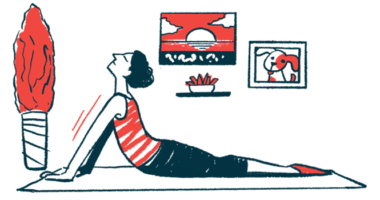AS Patients at Higher Risk of Obstructive Sleep Apnea, Taiwanese Study Finds

People with ankylosing spondylitis (AS) are almost three times more likely to develop obstructive sleep apnea (OSA) than healthy individuals, a population-based study in Taiwan shows.
The risk is higher in middle-aged patients and those diagnosed more recently.
The study, “Ankylosing Spondylitis Is Associated With Risk of New-Onset Obstructive Sleep Apnea: A Nationwide Population-Based Cohort Study,” was published in the journal Frontiers in Medicine Rheumatology.
OSA is characterized by repetitive stops in breathing during sleep, leading to sleep fragmentation, fatigue, and daytime sleepiness.
Though AS primarily mainly affects the joints of the spine, patients often exhibit other manifestations, including OSA. Inflammation, typical in autoimmune diseases such as AS and also associated with OSA, is a common factor between the two disorders.
Indeed, studies have shown that the prevalence of obstructive sleep apnea in people with AS is higher than reported in the general population. Yet, long-term studies on the relationship between AS and the subsequent development of OSA are still lacking.
A group of Taiwanese researchers addressed this gap by conducting a longitudinal nationwide study to explore whether people with AS were more prone to develop OSA.
The team used the Taiwan National Health Insurance Research Database, in which 94% of the country’s population is enrolled, to identify 2,210 patients diagnosed with AS between 2003 and 2013. A total of 8,840 healthy people also were included as controls.
Among the AS group, most individuals (79.1%) were between 20–59 years old and 64.6% were male. Compared with the healthy controls, people with AS showed higher proportions of comorbidities such as asthma, chronic obstructive pulmonary disease, and hypertension. The patient group also were found to have greater use of medications, including non-steroidal anti-inflammatory drugs (NSAIDs) and corticosteroids.
After adjusting for factors such as gender, age, comorbidities, and medications, the results showed that people with AS were about 2.8-fold more likely to develop obstructive sleep apnea compared with the control group.
The risk factors significantly associated with the development of OSA included being male, having asthma, having esophageal disease, having had a hepatitis B viral infection, and using NSAIDs.
In particular, the risk was higher — nearly 8-fold — in patients within two years of diagnosis compared with those whose diagnosis had been over two years before (about 1.8-fold).
Both males (2.7-fold) and females (4.5-fold) with AS showed higher risk of OSA than the general population. As for age, the likelihood of having obstructive sleep apnea was 1.8 higher in patients ages 20-39, 3.9-fold greater in those ages 40-59, and also 3.9 times higher in people with AS older than 60. However, only the group ages 40-59 had a statistically significant greater risk.
While the underlying processes linking AS and OSA are largely unclear, the researchers suggested one factor may be the AS-associated restriction of the airways due to joint involvement.
In addition, cytokines — small molecules involved in inflammation — may be involved in sleep regulation in people with systemic inflammatory disorders such AS, they added.
“This 11-year population-based cohort study demonstrated a higher risk of OSA in patients with AS, among both genders and those aged 40–59. The risk was highest within the first 2 years of diagnosis of AS,” the investigators said.
“It is important to evaluate sleep quality and quantity for patients with AS to detect the occurrence of OSA and to reduce further complications,” they said.






